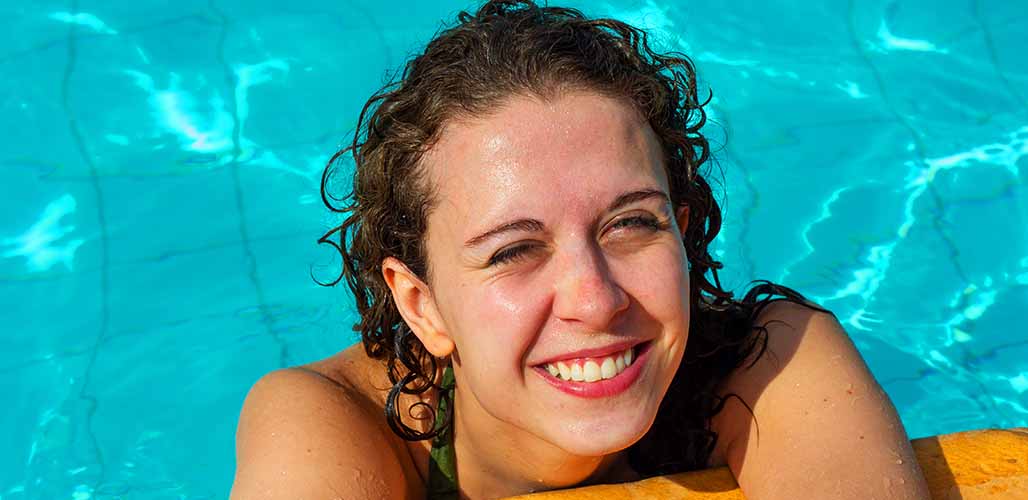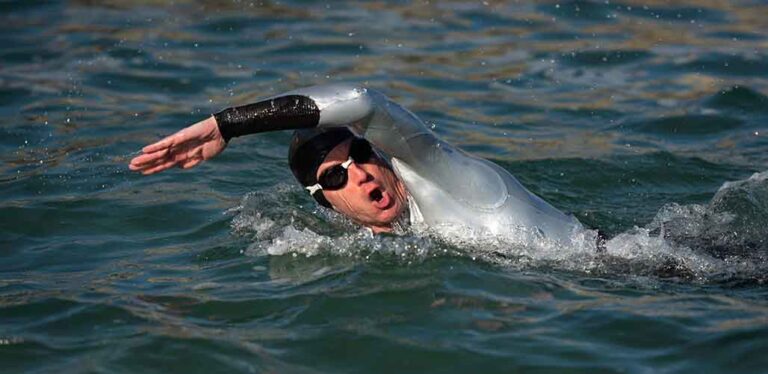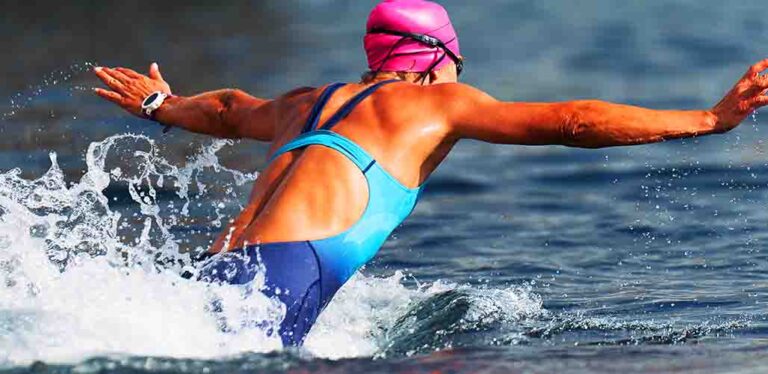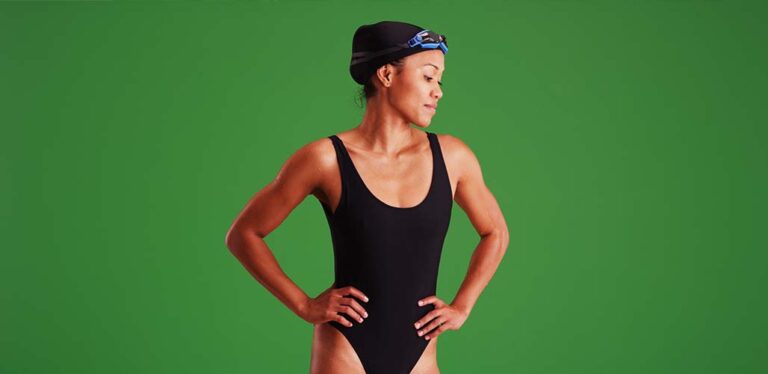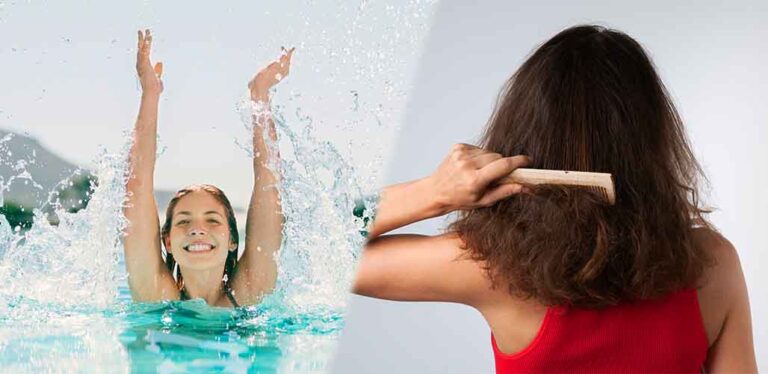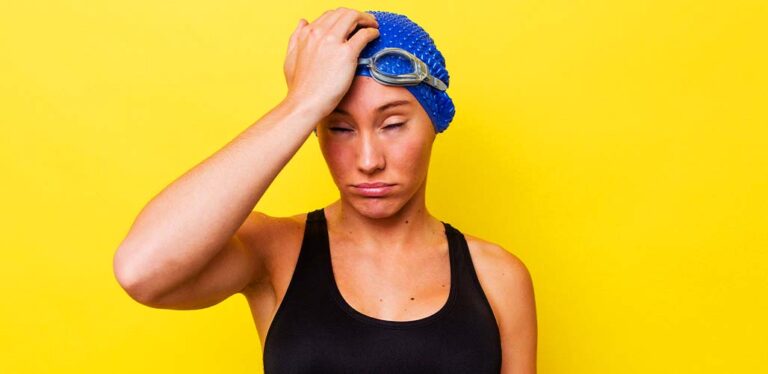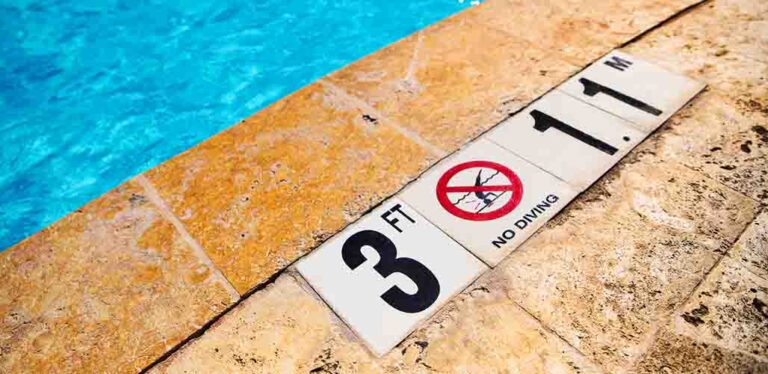How Long Can Chlorine Stay In Your Hair?
I have a love-hate relationship with the smell of chlorine in my hair. On the one hand, it’s not exactly a pleasant smell. But sometimes it does feel a bit like a badge of honor, proving that yes I did get out of bed extra early enough in order to go for a swim before work today. It is the aroma of someone who made a promise to workout, and delivered. But it does raise the specter of how long can chlorine stay in your hair? And as long as the aroma lingers, could it be doing damage?
Chlorine will pretty much stay in your hair until it is washed out. How long that takes depends upon your hair’s individual properties, what you’re using to wash it, and how often. Here’s everything you need to know about the staying power of chlorine, and what you can do about it.
Contents
- How long can chlorine stay in your hair?
- Factors that affects how long chlorine clings to hair
- The effects of unremoved on hair
- How to remove chlorine from hair faster
How long can chlorine stay in your hair?
Chlorination of swimming pools is important to protect us from waterborne pathogens such as E.coli, that could otherwise make us very sick. And did you know that the smell of a swimming pool isn’t actually the smell of chlorine at all? Chlorinated water is actually odorless until people get in it. It’s only when the chlorine reacts with organic matter from our bodies (like hair, skin, sweat and urine) that new compounds called chloramines are produced, which have that distinctive bleachy smell.
Chloramines can irritate your skin and airways, so it’s best to wash them off as soon as possible after a swim, for your general health. Only washing will get rid of them, but how long it takes to get rid of all that pesky residue depends upon what you wash with, and the individual properties of your hair.
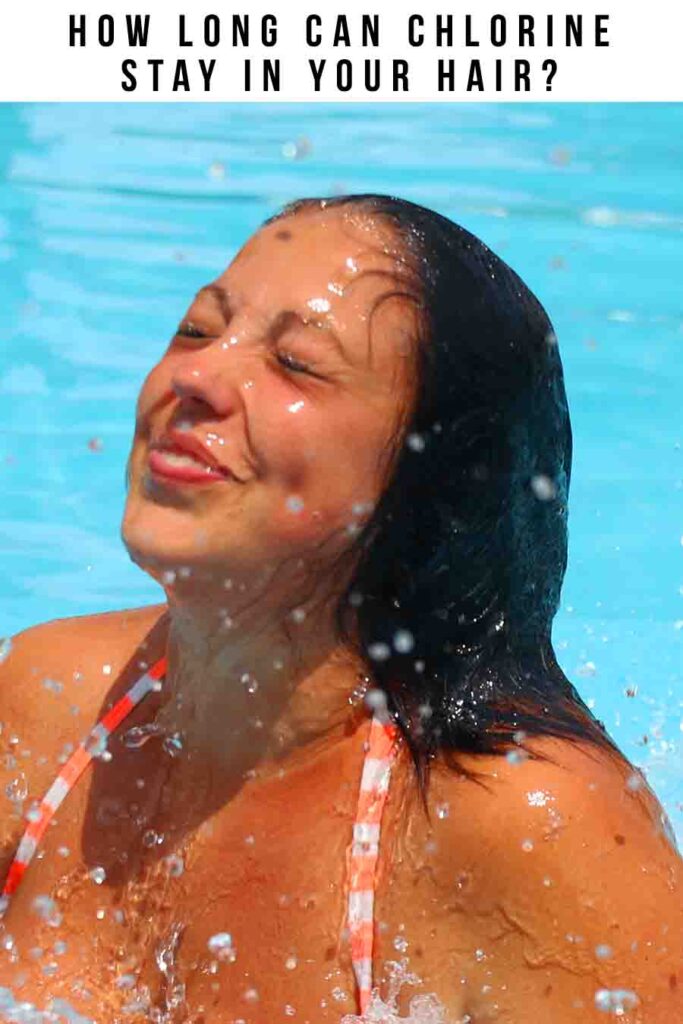
Hair is made up of an inner cortex surrounded by an outer cuticle. The cuticle is made up of layers of overlapping scales called keratinocytes. The keratinocytes mostly made of protein, but they are cushioned by layers of naturally produced lipids (oils), and the outer surface of the hair shaft is also coated with lipids. Overall, this makes the structure of hair resistant to penetration by water and chemicals. But, there are lots of things which can damage the keratinocytes, or break down the lipid layers that surround them, and make the hair more porous. When this happens, chlorinated water can penetrate it more deeply, and get stuck there for longer.
Factors that affects how long chlorine clings to hair
Here are the main factors which affect how long chlorine can stay in your hair, assuming you don’t take any special steps to stop it getting there, or rinse it out:
- Your age
- Your ethnicity
- How long your hair is
- Whether it has been treated with bleach, dyes, perming lotion or relaxer
- How you look after it on a day-to-day basis
- Sun exposure
Your age
From your forties or fifties onwards, the structure of the cuticle of your hair becomes increasingly fragile and starts to degrade. The scales of the cuticle start to lift up, and chlorinated water can more easily permeate underneath them, making it harder to remove.
Ethnicity
The number of layers of cuticle surrounding each of your hairs depends upon your ethnicity. Asian people have the most, white people slightly fewer, and black people fewer still. This means the surface of afro-textured hair is both more fragile, and more easily damaged – which makes it more permeable to pool water too.
Hair length
The amount of natural oil in your hair decreases from root to tip. So the longer your hair, the more porous it is at the ends, and the deeper chlorinated water will be able to soak into it. Meaning it will more easily get trapped there longer too.
Bleaching, dying, perming and relaxing
Treatments like these cause ‘chemical weathering’ of the hair cuticle – disturbing the normal position of the keratinocytes and destroying the layers of natural oils which protect them. Once again, this means chlorine can get deeper into the hair, and become harder to remove.
Daily care
How your treat your hair on an everyday basis can also affect how deeply chlorine enters the cuticle, and how long it takes to get back out. Frequent shampooing with strong shampoo damages the hair cuticle, making it more porous. Exposing wet hair to high temperatures from hair dryers and styling tools also damages the structure of the cuticle by creating bubbles in it, which could act like a sponge for chlorine, trapping it in the hair shaft.
Sun exposure
Finally, UVB radiation in sunlight damages the keratin in our hair over time. Compromising the integrity of the cuticle and, you’ve guessed it, making it more porous to chlorine.
The effects of unremoved on hair
Like the styling treatments just mentioning, chlorine causes chemical weathering of the hair shaft. The scales of the cuticle are predominantly made of the protein keratin – hence the name keratinocytes. Like all proteins, keratin is made up of building blocks called amino acids. Chlorine reacts with these amino acids – stealing some of their atoms to form new compounds called chloramines (the ones with the ‘swimming pool’ smell), and thus leaving the amino acids permanently damaged.
Chlorine also breaks down lipids (oils) on the surface of the hair and between the layers of the cuticle. Cumulatively, these processes make chlorine-exposed hair dry, brittle, and prone to breakage.
How to remove chlorine from hair faster
By now, like me, you’re probably feeling anxious to get chlorine out of your hair as quickly as possible! Here’s how
- Limit how deeply it can get into your hair in the first place.
- Wash with a specialist shampoo for swimmers
Limit how deeply it can get into your hair in the first place
Put simply, it’s easier to remove chlorinated water from the surface of the hair cuticle than deep between its layers. To stop it permeating your tresses, you can:
- Wear a swim cap. Whilst the purpose of swim caps is primarily to reduce drag, and they won’t keep your head completely dry, they do help.
- Soak your hair in the shower before entering the pool. The principle behind this is that your hair is like a sponge – if you fill each strand with clean water before entering the pool, the chlorinated water won’t be able to get in.
Wash with a specialist shampoo
All shampoos contain detergents for removing dirt, grease and dead skin cells from your hair. Shampoos formulated for using after swimming contain a particular detergent called sodium thiosulfate, which specifically reacts with and removes chlorine residue. Well known shampoo brands containing sodium thiosulfate are UltraSwim and TriSwim.
Summary – How long can chlorine stay in your hair?
There’s no fixed amount of time that chlorine can stay in your hair for. It depends on the individual structure of your hair, and what steps you take to remove it. Washing chlorine out of your hair using a specially formulated shampoo for swimmers straight after getting out the pool is a good idea to mitigate long term damage.

